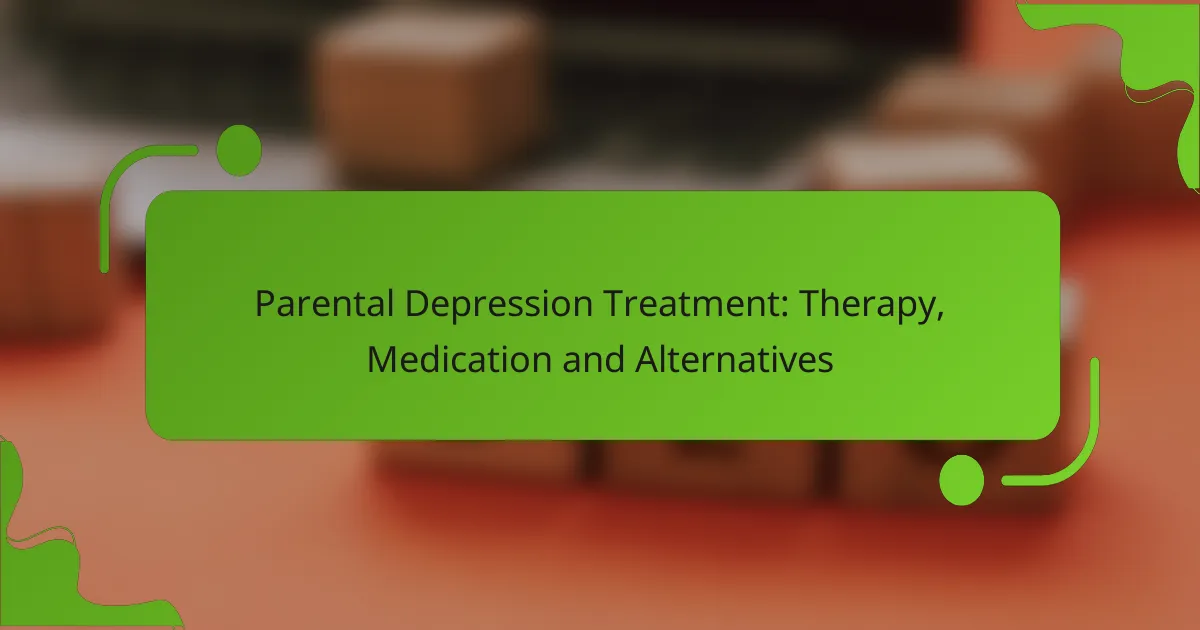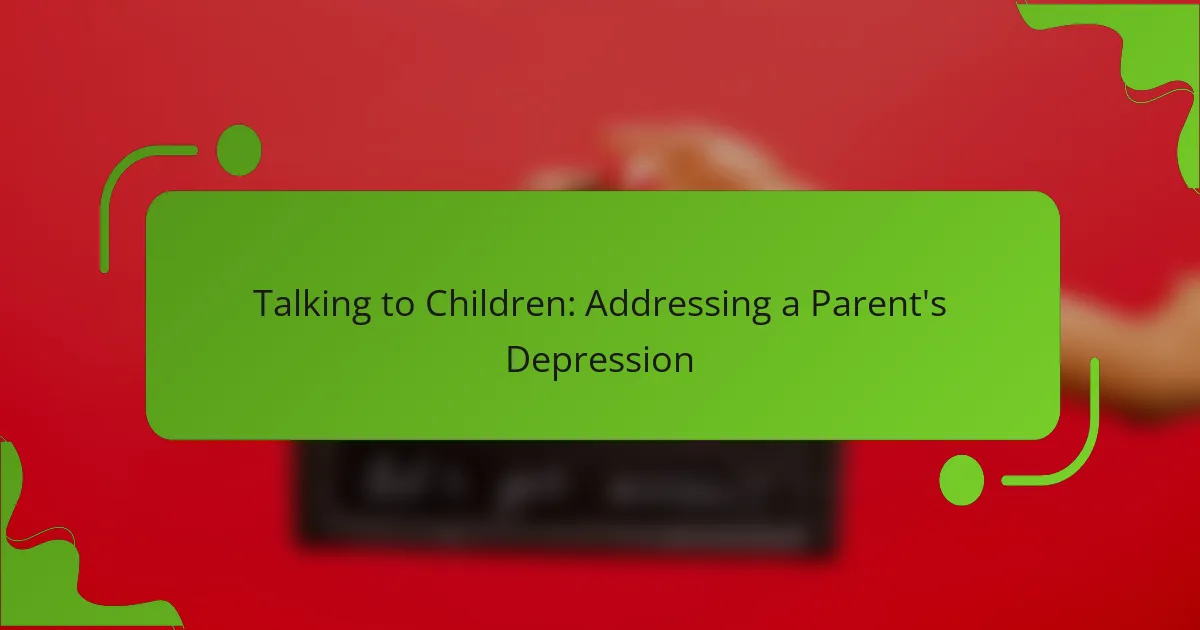Matala- ja keskituloiset perheet Suomessa voivat hyödyntää monia mielenterveysresursseja, jotka on suunniteltu tukemaan masennuksesta kärsiviä. Näihin resursseihin kuuluvat julkiset terveyspalvelut, voittoa tavoittelemattomat järjestöt, yhteisön tukiryhmät ja verkkohoitopalvelut, jotka tekevät mielenterveydenhuollosta helpommin saatavilla olevaa.
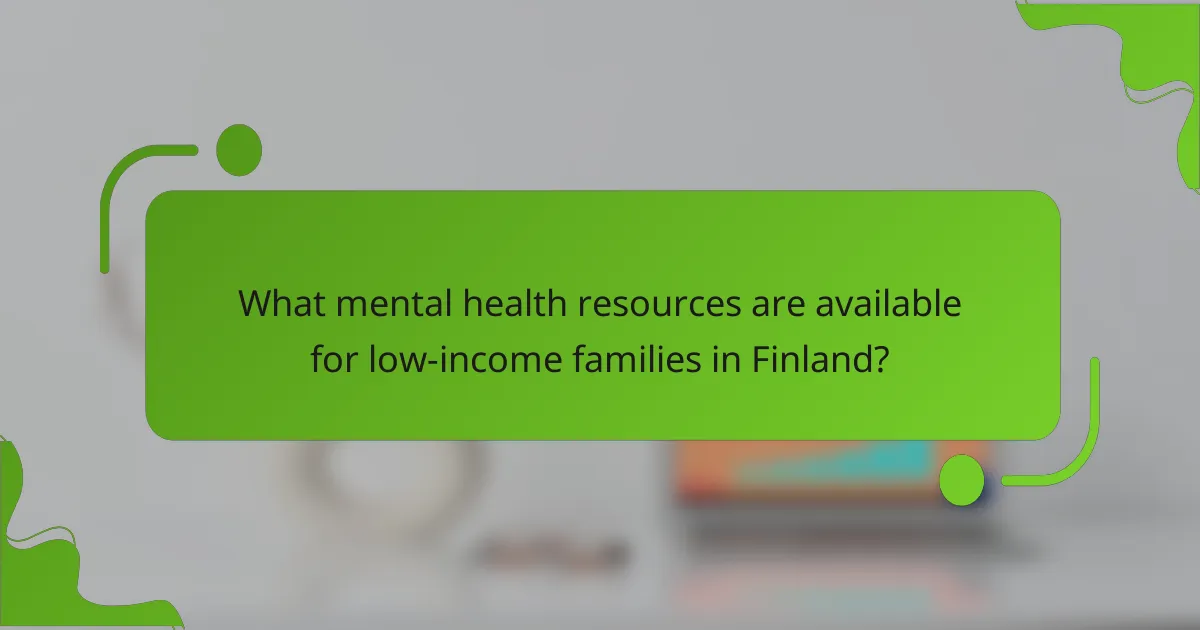
What mental health resources are available for low-income families in Finland?
Low-income families in Finland can access various mental health resources designed to provide support for depression and other mental health issues. These resources include public health services, non-profit organizations, community support groups, and online therapy platforms, all aimed at making mental health care more accessible.
Public health services
In Finland, public health services offer mental health support through municipal health centers. Families can access counseling and therapy services at little to no cost, depending on their income level. It’s advisable to contact the local health center to understand the specific services available in your area.
Additionally, the Finnish government provides mental health care under the National Health Insurance scheme, which covers a portion of the costs for therapy sessions. This makes it easier for low-income families to seek help without financial strain.
Non-profit organizations
Several non-profit organizations in Finland focus on mental health support for low-income families. For instance, the Finnish Association for Mental Health offers resources, information, and support networks aimed at those struggling with mental health issues. They often provide free workshops and seminars to educate families about mental health.
Another notable organization is Mieli, which provides crisis support and helplines for individuals facing mental health challenges. These services are typically free and can be accessed by anyone in need.
Community support groups
Community support groups play a crucial role in providing peer support for low-income families dealing with depression. These groups often meet regularly and offer a safe space for individuals to share their experiences and coping strategies. Many local municipalities facilitate these groups, making them easily accessible.
Participating in a community support group can help families feel less isolated and more connected. It’s beneficial to look for groups that specifically cater to families or parents, as they can provide tailored support and understanding.
Online therapy platforms
Online therapy platforms have gained popularity in Finland, offering affordable mental health services to low-income families. These platforms typically provide access to licensed therapists through video calls, chat, or messaging, making therapy more convenient and accessible.
Many online services offer sliding scale fees based on income, ensuring that families can find support within their budget. It’s important to research and choose a platform that is reputable and meets your specific needs.

How can low-income families access mental health support in Finland?
Low-income families in Finland can access mental health support through various public services and non-profit organizations that offer affordable or free resources. These services often include counseling, therapy, and support groups tailored to those experiencing depression.
Eligibility criteria for services
Eligibility for mental health services in Finland typically depends on income level, family size, and specific needs related to mental health. Many services are designed for individuals and families with limited financial resources, ensuring that support is accessible to those who need it most.
For example, families receiving social assistance or those with incomes below a certain threshold may qualify for subsidized or free mental health services. It’s advisable to check with local health authorities for specific criteria that apply in your municipality.
Application process for aid
The application process for mental health support usually begins with contacting local health services or community organizations. Families can inquire about available programs and the necessary documentation, such as proof of income or residency.
Once the initial contact is made, families may need to fill out an application form and provide relevant information about their mental health needs. It’s important to follow up on the application status and ask for assistance if any challenges arise during the process.
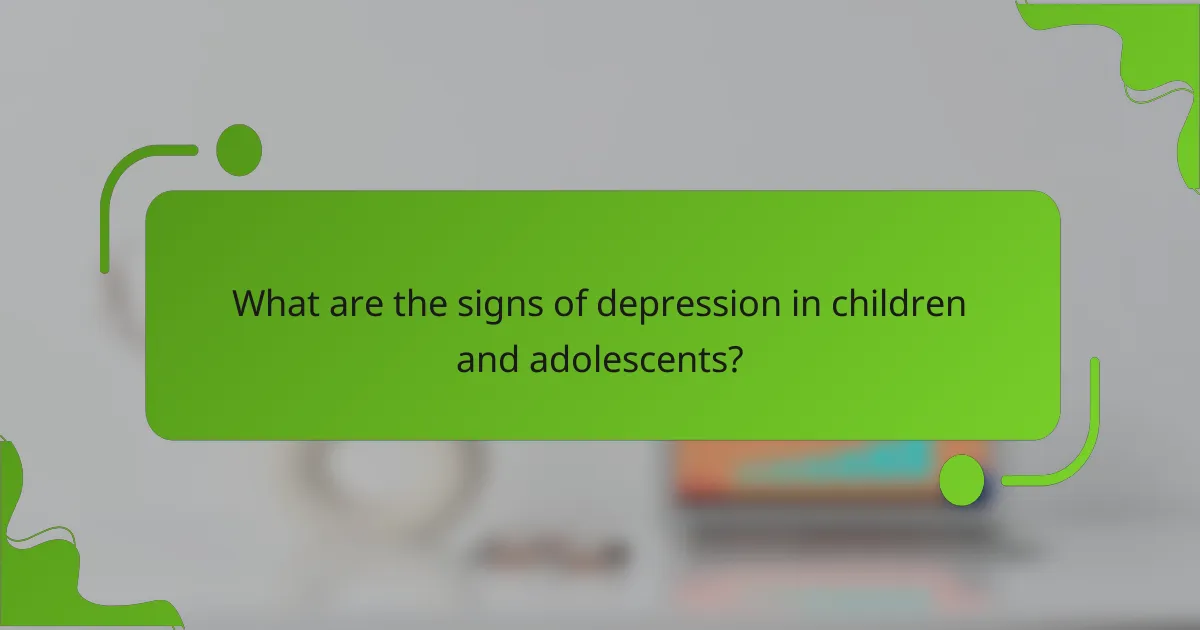
What are the signs of depression in children and adolescents?
Signs of depression in children and adolescents can manifest in various ways, often differing from adult symptoms. Key indicators include persistent sadness, withdrawal from activities, and changes in behavior or mood.
Behavioral changes
Children and adolescents experiencing depression may exhibit noticeable behavioral changes. These can include a decline in academic performance, increased irritability, or a loss of interest in previously enjoyed activities. Additionally, they might engage in risky behaviors or show signs of agitation.
Parents should be vigilant for changes in social interactions, such as withdrawing from friends or family. Sudden changes in sleep patterns, like insomnia or excessive sleeping, can also signal underlying depression.
Emotional symptoms
Emotional symptoms of depression in younger individuals often include feelings of hopelessness, worthlessness, or excessive guilt. They may express these feelings verbally or through changes in their demeanor, appearing more tearful or anxious than usual.
It’s important to recognize that these emotional symptoms can sometimes lead to physical complaints, such as stomachaches or headaches, which may not have a medical basis. Open communication and support from family can help children articulate their feelings and seek necessary help.

What role do schools play in supporting mental health?
Schools play a crucial role in supporting mental health by providing resources and services that address the emotional well-being of students. They create an environment where mental health issues can be recognized and addressed early, helping to reduce stigma and promote overall wellness.
School counseling services
School counseling services are essential for students facing mental health challenges. These services typically include individual counseling, group therapy, and crisis intervention, all aimed at helping students cope with stress, anxiety, and depression. Counselors are trained to identify signs of mental health issues and can connect students with additional resources if needed.
In Finland, school counselors often collaborate with parents and teachers to create a supportive network for students. They may also conduct workshops to educate the school community about mental health, ensuring that everyone understands the available support systems.
Awareness programs
Awareness programs in schools are designed to educate students and staff about mental health issues and reduce stigma. These programs can include workshops, seminars, and campaigns that promote understanding and empathy towards those experiencing mental health challenges. By fostering a culture of openness, schools can encourage students to seek help when needed.
For effective awareness programs, schools should consider involving mental health professionals to lead discussions and provide accurate information. Engaging students in peer-led initiatives can also enhance the impact, as they often resonate more with their peers. Regular assessments of these programs can help ensure they meet the needs of the student body effectively.
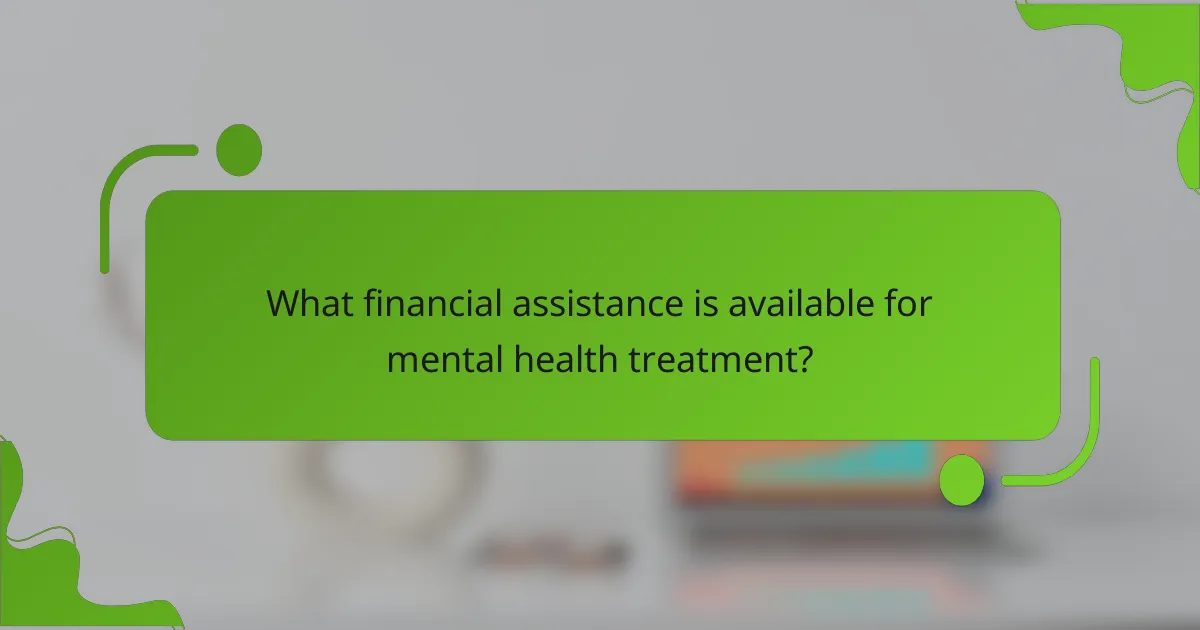
What financial assistance is available for mental health treatment?
Financial assistance for mental health treatment can significantly help low-income families facing depression. Various options exist, including government subsidies and insurance coverage, which can alleviate the costs associated with therapy and medication.
Government subsidies
Government subsidies are financial aids provided by the state to support mental health services for low-income families. In Finland, the Social Insurance Institution (Kela) offers reimbursement for mental health treatment, which can cover a portion of therapy costs, making it more accessible.
To qualify for these subsidies, families typically need to demonstrate financial need and may need to provide documentation of their income. It’s advisable to check Kela’s website for specific eligibility criteria and application procedures.
Insurance coverage options
Insurance coverage for mental health treatment varies widely among providers. Many Finnish health insurance plans include mental health services, but the extent of coverage can differ, so it’s essential to review your policy details.
Commonly, insurance may cover therapy sessions, medications, and hospital stays related to mental health issues. Families should contact their insurance provider to understand the specifics of their coverage, including any co-pays or limits on the number of sessions per year.
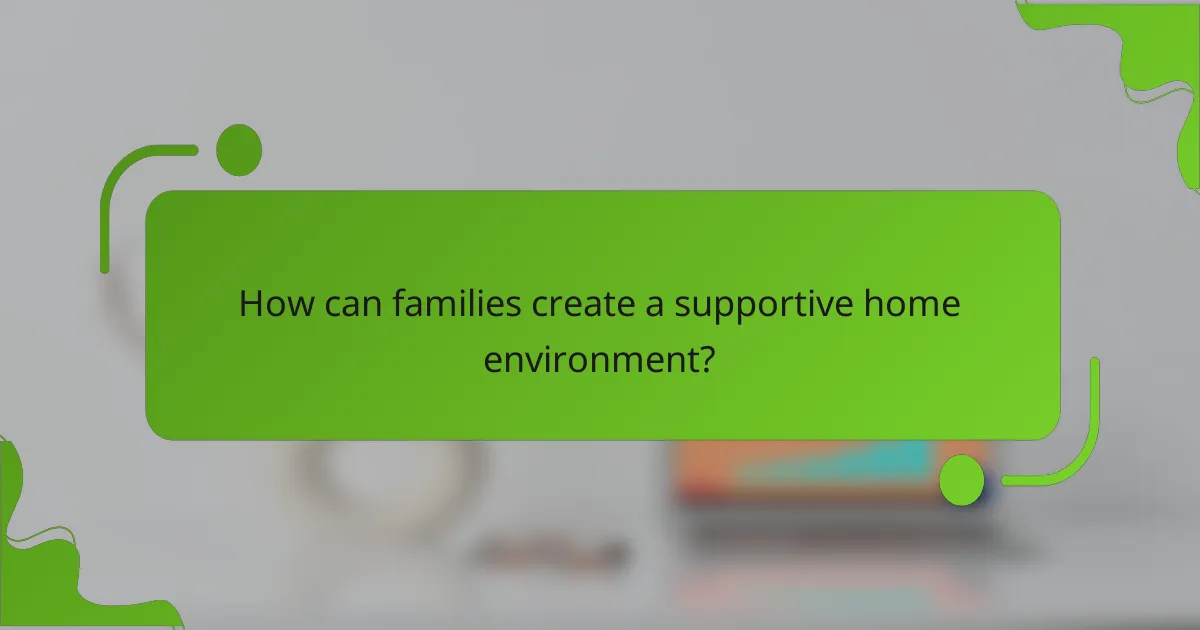
How can families create a supportive home environment?
Creating a supportive home environment involves fostering open communication, understanding, and emotional safety. Families can implement practical strategies to ensure that all members feel valued and heard, which is crucial for addressing mental health challenges like depression.
Open communication strategies
Open communication is essential for families to support each other effectively. Establishing regular family meetings can provide a structured time for everyone to share their feelings and concerns. This practice encourages transparency and helps to normalize discussions about mental health.
Active listening is another key strategy. Family members should practice listening without interrupting, showing empathy, and validating each other’s feelings. This can create a safe space where individuals feel comfortable expressing their struggles without fear of judgment.
Additionally, using “I” statements can help reduce defensiveness during conversations. For example, saying “I feel worried when…” instead of “You always make me worried…” can lead to more productive discussions. Families should aim to create an atmosphere where everyone feels empowered to speak openly about their emotions and experiences.

